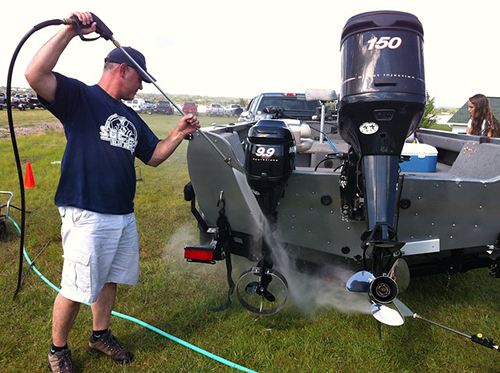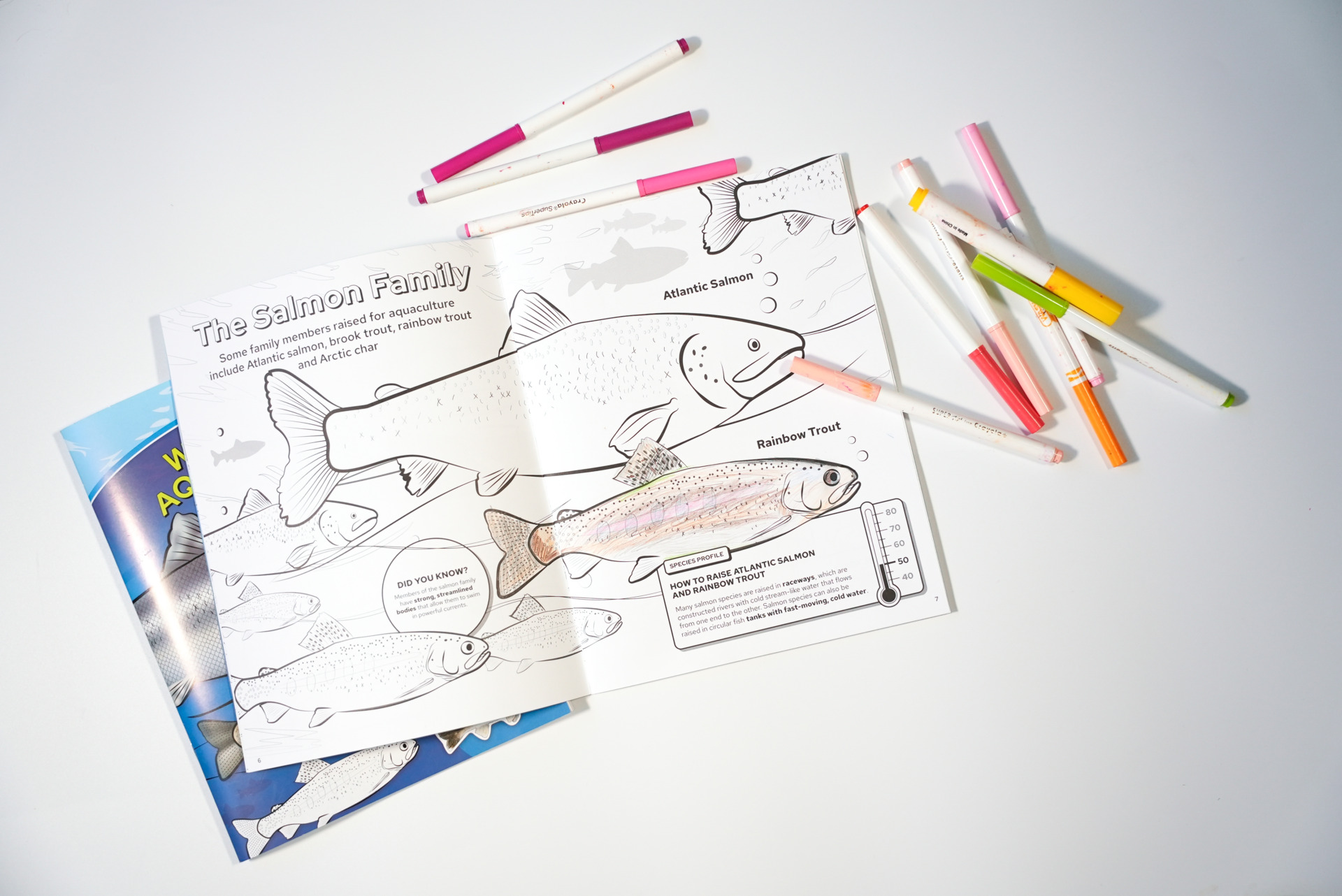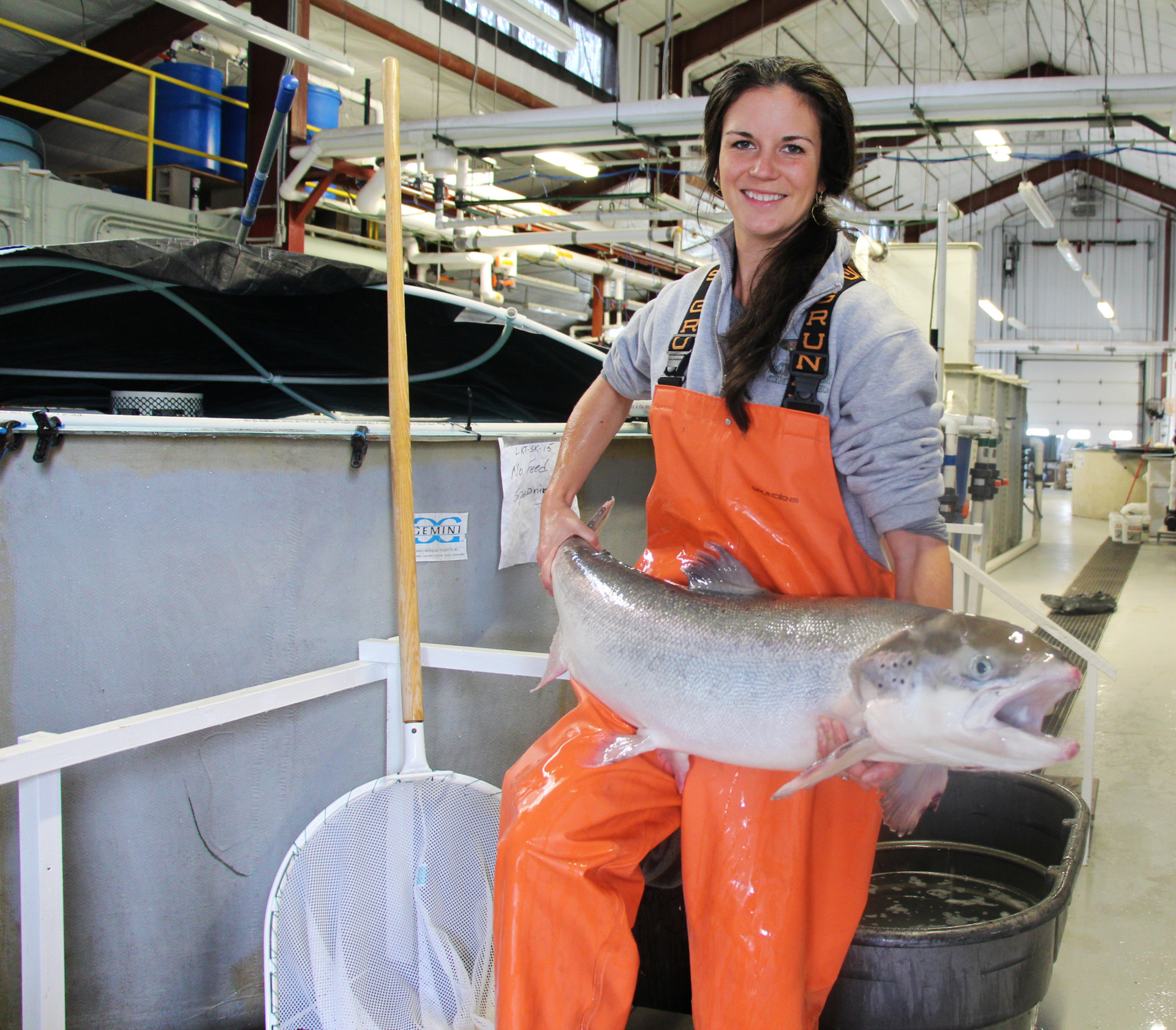In the battle against aquatic invasive species (AIS), Wisconsin is doing something right.
Thanks to programs like Clean Boats, Clean Waters, there has not been significant spread of existing AIS in the Great Lakes and Wisconsin’s inland lakes in the last few years.
Clean Boats, Clean Waters educates boaters (and users of other watercraft, like canoes and kayaks) about procedures that protect our local waters. Trained inspectors assist and interact directly with boaters at landings and other locations.

In this 2013 photo, a volunteer washes a boat at a fishing tournament in order to prevent the spread of aquatic invasive species. (Photo: Wisconsin Sea Grant)
“The rate of new invasions is not increasing and our boater surveys show that boaters take prevention actions at a high rate. That shows that a lot of our aquatic invasive species prevention activities are having an impact,” said Tim Campbell, Wisconsin Sea Grant’s AIS outreach specialist.
Clean Boats, Clean Waters has been around since 2004. Wisconsin Sea Grant implements the program in partnership with the Wisconsin Department of Natural Resources and University of Wisconsin-Madison Division of Extension.
During the 2018 program season—mainly Memorial Day to Labor Day—trained inspectors checked 2,720 watercraft, an increase of 1,551 from the previous year. Roughly 97% of watercraft users were willing to speak with inspectors on site.
Three paid college student interns did the bulk of those inspections, covering numerous boat landings along the Lake Michigan shore. The experience appealed to the students because it tied in with their majors, which included sustainable management and marine biology, and because it offered an opportunity to perform environmental education work in an outdoor setting.
Said Matthew Cherney, one of the 2018 inspectors, “Many of the boaters thanked me for being out and doing my job, which is pretty cool.”
Great Lakes Civilian Conservation Corps (GLCCC) members, who worked boat landings in Kenosha and Racine, performed additional inspections.
Two 2018 inspectors were able to stay on past Labor Day and engage in outreach to waterfowl hunters in late September and into October.
Looking ahead to the 2019 season, Campbell plans to sustain and grow the momentum built by this successful program.
“As long as people continue to ‘Inspect Remove Drain,’ I think the odds of seeing a new invasion [by an aquatic invasive species] are really low, and that’s very encouraging,” said Campbell, who has joint appointments with the UW-Madison Division of Extension and the Wisconsin DNR.
One of Campbell’s hopes is to lengthen the inspection season, since there are many fishing and boating opportunities that fall outside of the Memorial-to-Labor-Day window. These include nearshore salmon and trout fishing in the spring and fall.
As in 2018, there will be three main inspectors in 2019, plus the GLCCC participants.
Molly Bodde, an inspector last year who is pursuing a graduate degree in sustainable management, has moved into a part-time staff position with Wisconsin Sea Grant, where she coordinates AIS prevention activities in southeastern Wisconsin. She is based in Bristol, Wisconsin.
Her duties will grow to include oversight of this year’s Clean Boats, Clean Waters activities. “Molly will work directly with the inspectors and the GLCCC to coordinate their training, inspection efforts and data entry while also getting into the field herself for some inspections,” said Campbell.
Boaters who are interested in brushing up on responsible boating practices that prevent the spread of AIS can check out these online resources:
Stop Aquatic Hitchhikers! Campaign
Prevention information from the Wisconsin Department of Natural Resources





